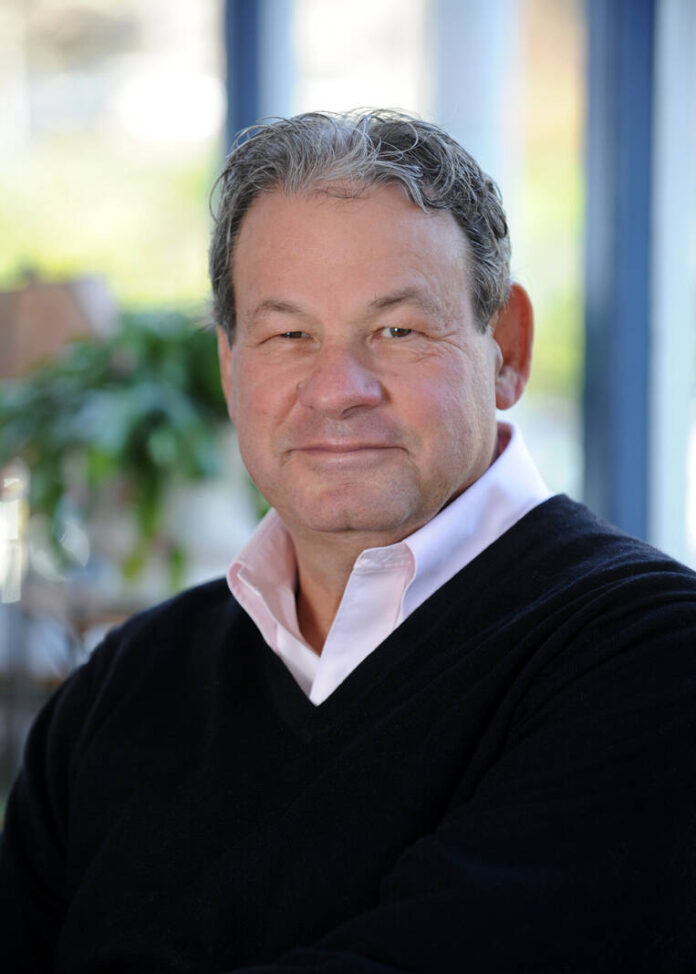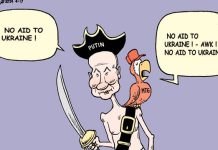What is the endgame for the war in Ukraine? What will that country look like in the future?
Many questions remain unanswered, but after a month of brutal battles, this much is clear: The two sides are essentially deadlocked. This war will be settled at the bargaining table, not on the battlefield.
Moscow’s goal of subduing and occupying Ukraine has failed in stunning and embarrassing fashion. As peace talks began in Istanbul, Russian Deputy Defense Minister Alexander Fomin conceded that his forces had “fundamentally … cut back military activity” around the capital of Kyiv in an attempt to “increase mutual trust and create conditions for further negotiations.”
And Kyiv admits that while it has resisted and even rolled back Russian advances, it cannot drive the invaders completely out of the country. “I realize that it’s impossible to force Russia to fully leave the territory,” Ukrainian president Volodymyr Zelenskyy said in a video address. “It could lead to World War III. I understand completely. I’m fully aware of it. That is why I’m saying, yes, this is a compromise.”
If “further negotiations” show progress — a big if — the shape of the compromise Zelenskyy envisions could start to emerge. A safe and stable Ukraine has to be a neutral country. It would not be part of Russia, but it would not belong to NATO, either. It could be European culturally, economically and even spiritually — but not militarily.
There are plenty of models to follow. Six nations — Austria, Cyprus, Finland, Ireland, Malta and Sweden — already belong to the European Union, a political and economic compact, but not to the military alliance.
Unlike Ukraine, however, none of those countries have large Russian-speaking minorities, and only Finland shares a sizeable border with Russia. Accordingly, Kyiv rightly insists that any deal has to involve some form of international guarantee, a NATO-like umbrella that protects its sovereignty from Moscow’s imperialistic impulses.
Zelenskyy has been very clear on the outlines of a deal, telling Russian news outlets in an interview, “Security guarantees and neutrality, non-nuclear status of our state — we are ready to go for it.”
Optimism is in short supply, however, and for good reason. Russia talks about increasing trust, but it keeps shelling civilian targets and denouncing its adversaries as Nazis, a totally unfounded allegation. Western leaders have been equally skeptical, with U.K. Foreign Secretary Liz Truss accusing Moscow of “wantonly bombing innocent citizens across Ukraine,” adding, “Putin is not serious about talks.”
If building trust is hard, changing mindsets is even harder. For peace talks to succeed, both sides have to give up longstanding aspirations. Putin has dreamed of absorbing Ukraine into a glorious Greater Russia ruled by a modern-day czar: Vlad the Violator. “Ukraine has never had its own authentic statehood,” he’s stated, and “true sovereignty of Ukraine is possible only in partnership with Russia.”
That is patently false. Ukrainian refugees are fleeing west, not east; they’re heading for Munich and Madrid, not Moscow.
Ukraine has had to alter its own dreams, too. The country amended its constitution three years ago to facilitate joining NATO. That hope is now gone.
“It is clear that Ukraine is not a member of NATO; we understand this,” Zelenskyy has said. “For years we heard about the apparently open door, but have already also heard that we will not enter there, and these are truths and must be acknowledged.”
Even if trust builds, dreams die and talks proceed, devilish details remain to be settled. If Ukraine emerges as an independent, neutral country, protected by international guarantees, what does it look like? What happens to Crimea, annexed by Russia in 2014, or the Donbas region on Ukraine’s eastern border, where Russian-backed separatists have been battling Kyiv for years?
Meanwhile, Western allies led by Washington have to maintain maximum pressure on Moscow with even tighter economic sanctions, greater military aid and unified resolve.
A free and nonaligned Ukraine is very much worth fighting for. Just ask the folks in Helsinki and Stockholm and Vienna.





